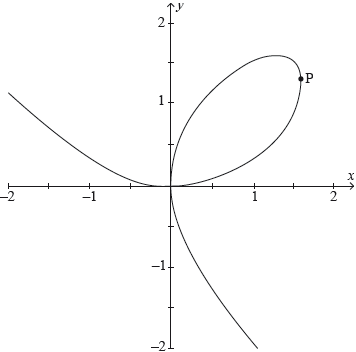| Date | May Specimen paper | Marks available | 1 | Reference code | SPM.1.SL.TZ0.8 |
| Level | Standard Level | Paper | Paper 1 (without calculator) | Time zone | Time zone 0 |
| Command term | Hence and Explain | Question number | 8 | Adapted from | N/A |
Question
Let .
The graph of has horizontal tangents at the points where = and = , < .
Find .
Find the value of and the value of .
Sketch the graph of .
Hence explain why the graph of has a local maximum point at .
Find .
Hence, use your answer to part (d)(i) to show that the graph of has a local minimum point at .
The normal to the graph of at and the tangent to the graph of at intersect at the point (, ) .
Find the value of and the value of .
Markscheme
(M1)A1
[2 marks]
correct reasoning that (seen anywhere) (M1)
valid approach to solve quadratic M1
, quadratic formula
correct values for
3, −5
correct values for and
= −5 and = 3 A1
[3 marks]
A1
[1 mark]
first derivative changes from positive to negative at A1
so local maximum at AG
[1 mark]
A1
substituting their into their second derivative (M1)
(A1)
[3 marks]
is positive so graph is concave up R1
so local minimum at AG
[1 mark]
normal to at is = −5 (seen anywhere) (A1)
attempt to find -coordinate at their value of (M1)
−10 (A1)
tangent at has equation = −10 (seen anywhere) A1
intersection at (−5, −10)
= −5 and = −10 A1
[5 marks]


